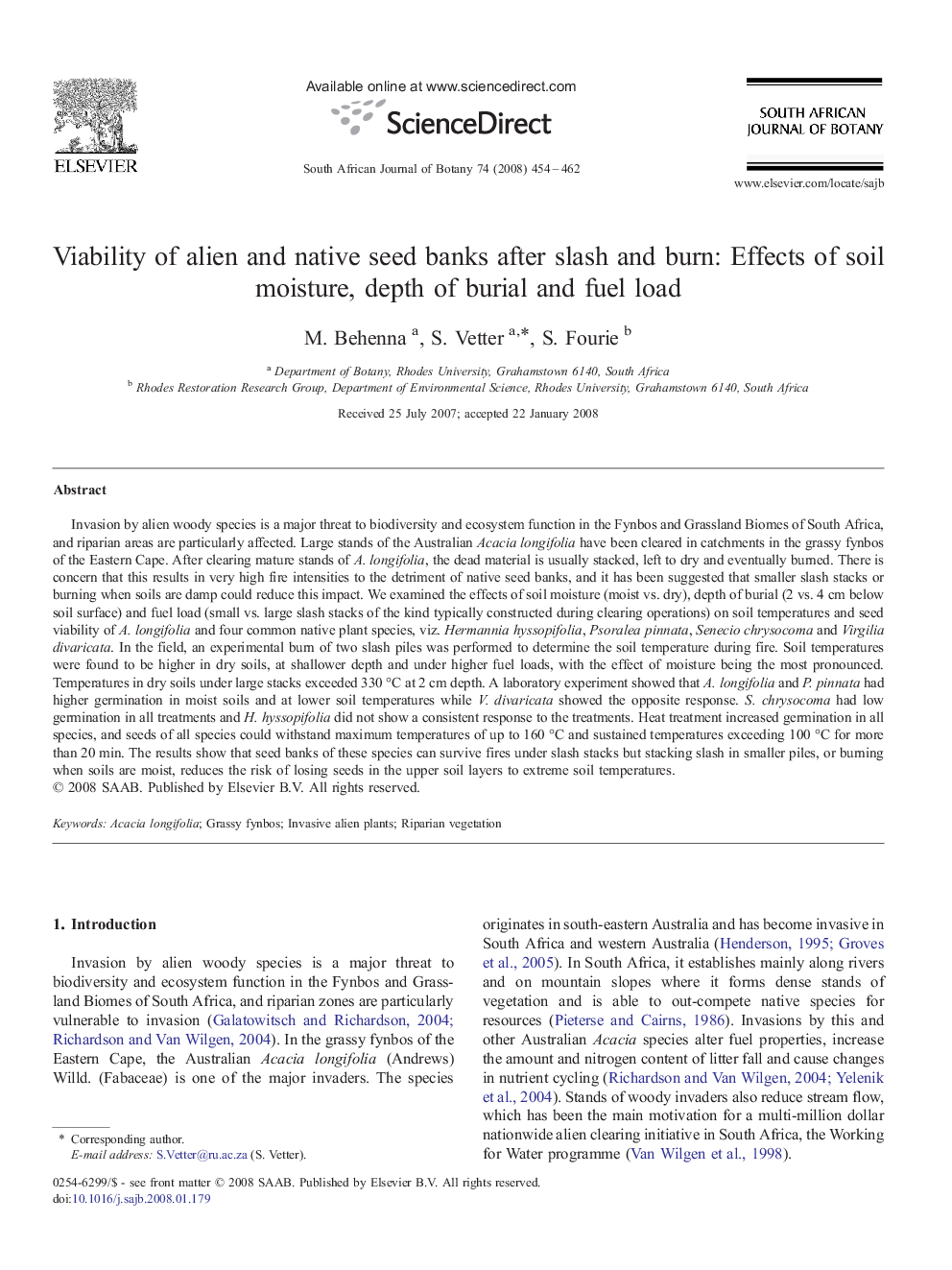| کد مقاله | کد نشریه | سال انتشار | مقاله انگلیسی | نسخه تمام متن |
|---|---|---|---|---|
| 4521490 | 1625194 | 2008 | 9 صفحه PDF | دانلود رایگان |

Invasion by alien woody species is a major threat to biodiversity and ecosystem function in the Fynbos and Grassland Biomes of South Africa, and riparian areas are particularly affected. Large stands of the Australian Acacia longifolia have been cleared in catchments in the grassy fynbos of the Eastern Cape. After clearing mature stands of A. longifolia, the dead material is usually stacked, left to dry and eventually burned. There is concern that this results in very high fire intensities to the detriment of native seed banks, and it has been suggested that smaller slash stacks or burning when soils are damp could reduce this impact. We examined the effects of soil moisture (moist vs. dry), depth of burial (2 vs. 4 cm below soil surface) and fuel load (small vs. large slash stacks of the kind typically constructed during clearing operations) on soil temperatures and seed viability of A. longifolia and four common native plant species, viz. Hermannia hyssopifolia, Psoralea pinnata, Senecio chrysocoma and Virgilia divaricata. In the field, an experimental burn of two slash piles was performed to determine the soil temperature during fire. Soil temperatures were found to be higher in dry soils, at shallower depth and under higher fuel loads, with the effect of moisture being the most pronounced. Temperatures in dry soils under large stacks exceeded 330 °C at 2 cm depth. A laboratory experiment showed that A. longifolia and P. pinnata had higher germination in moist soils and at lower soil temperatures while V. divaricata showed the opposite response. S. chrysocoma had low germination in all treatments and H. hyssopifolia did not show a consistent response to the treatments. Heat treatment increased germination in all species, and seeds of all species could withstand maximum temperatures of up to 160 °C and sustained temperatures exceeding 100 °C for more than 20 min. The results show that seed banks of these species can survive fires under slash stacks but stacking slash in smaller piles, or burning when soils are moist, reduces the risk of losing seeds in the upper soil layers to extreme soil temperatures.
Journal: South African Journal of Botany - Volume 74, Issue 3, July 2008, Pages 454–462